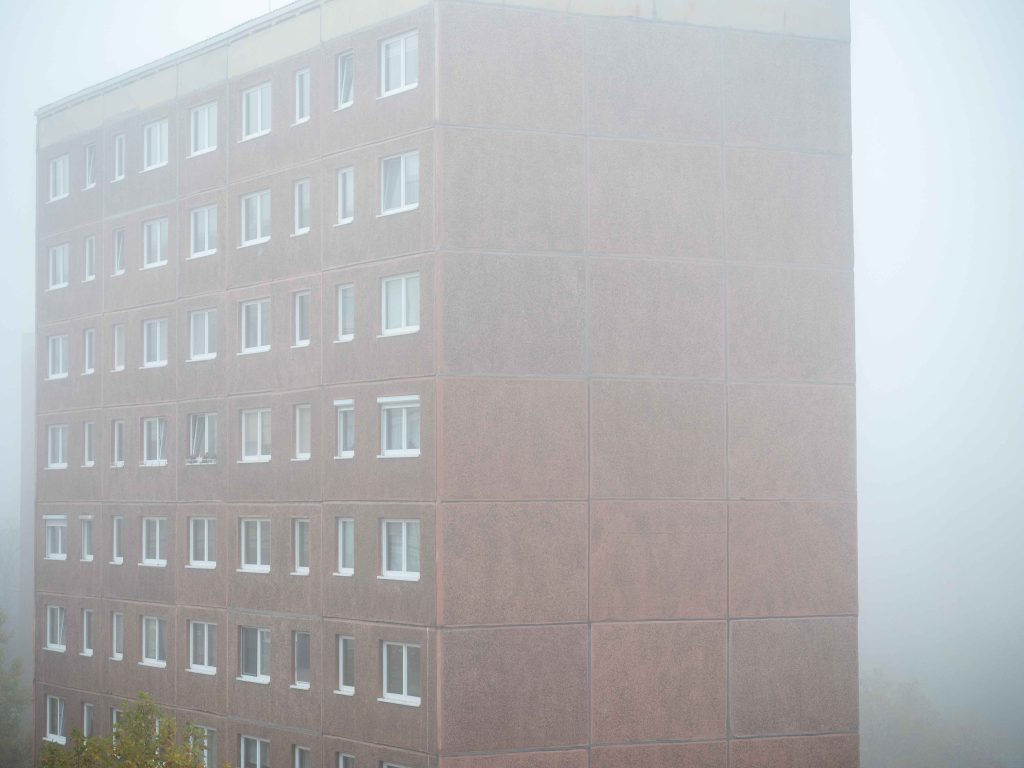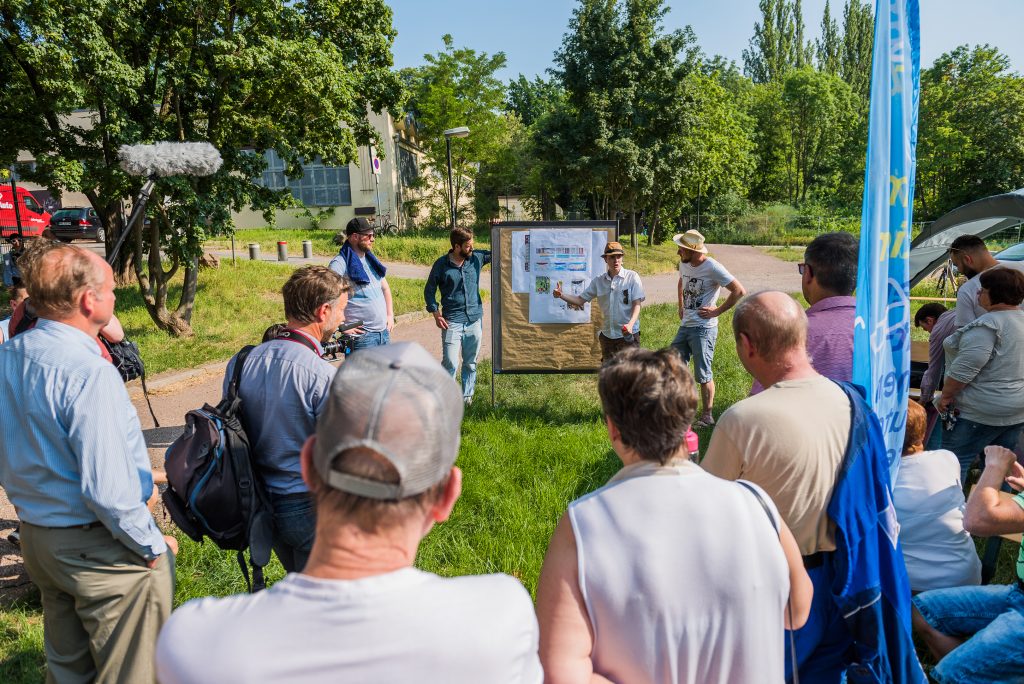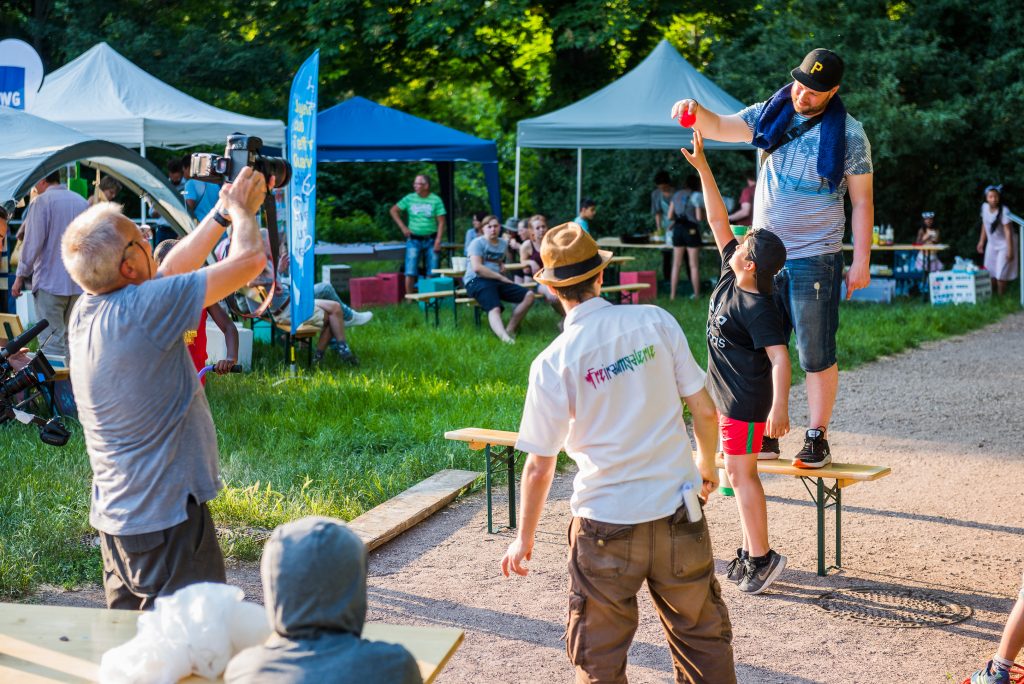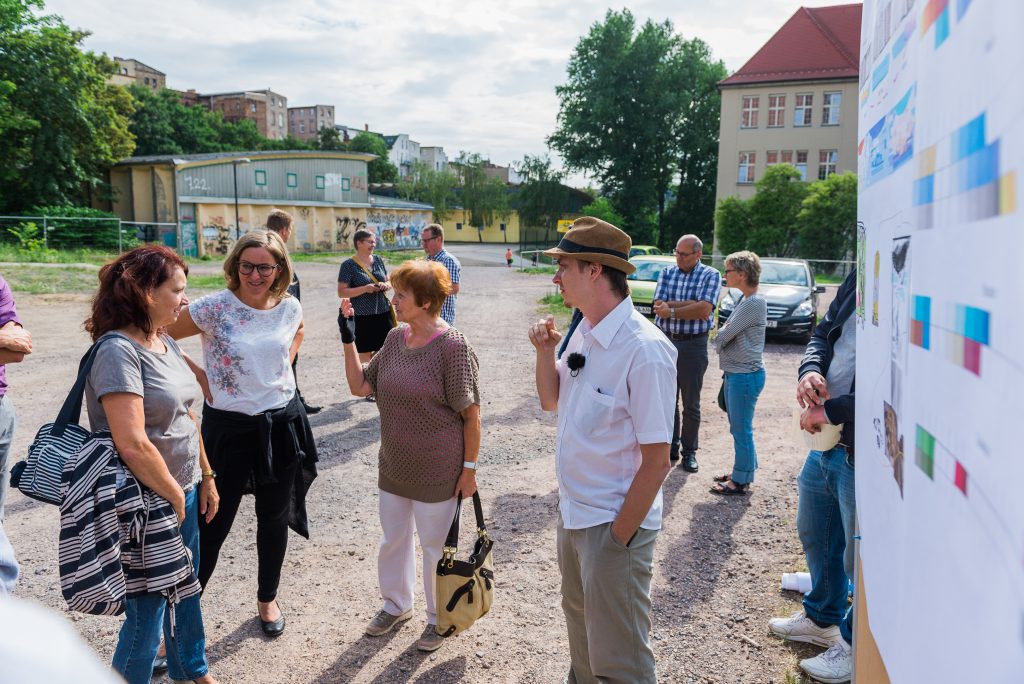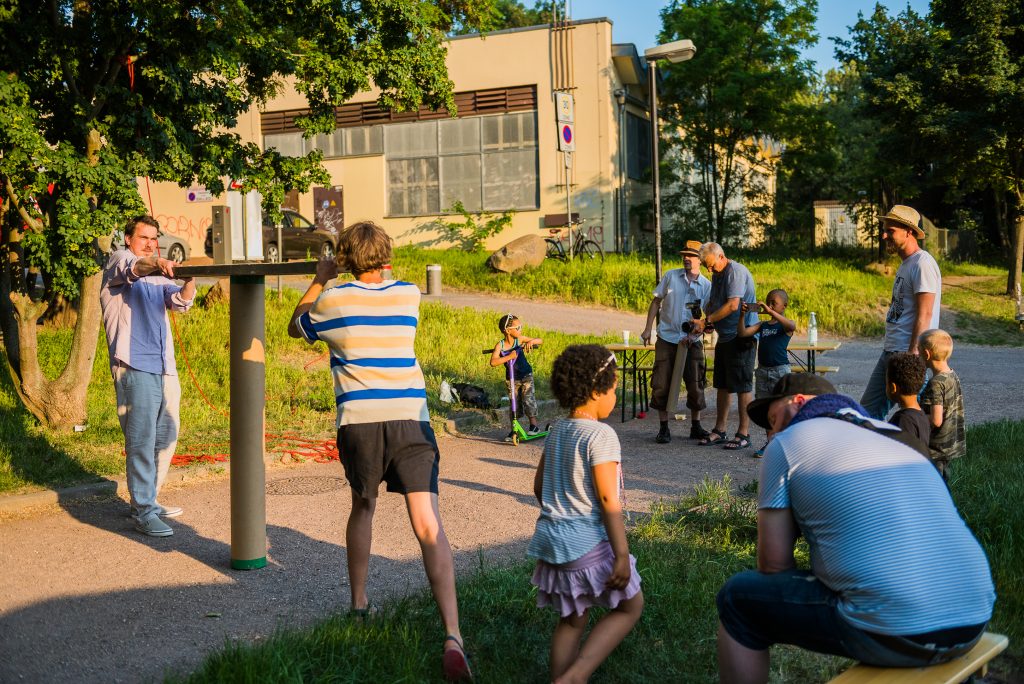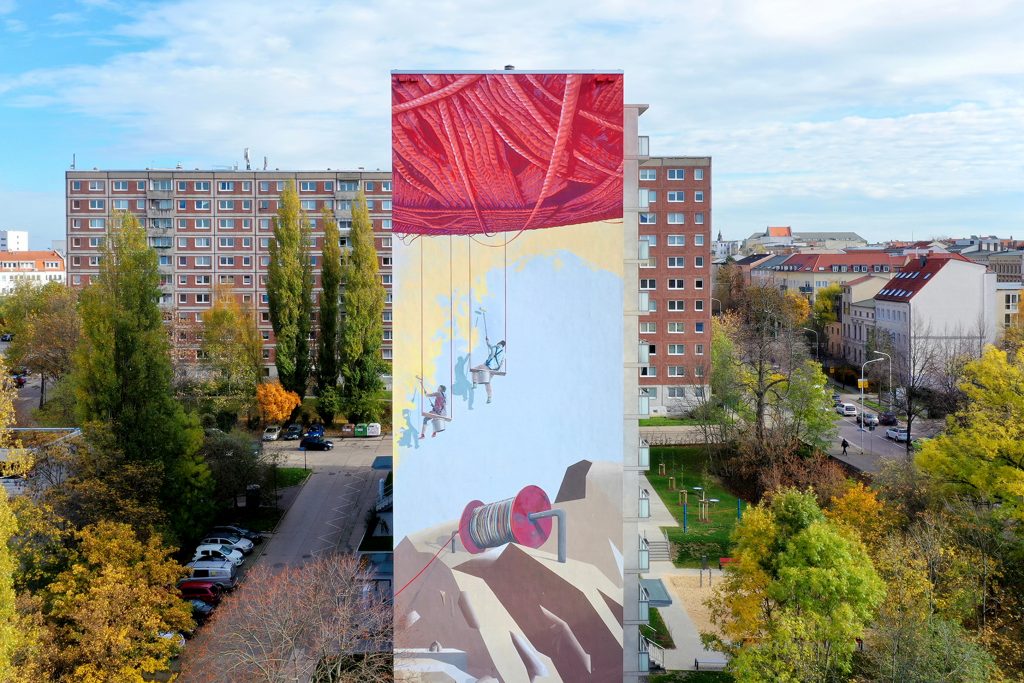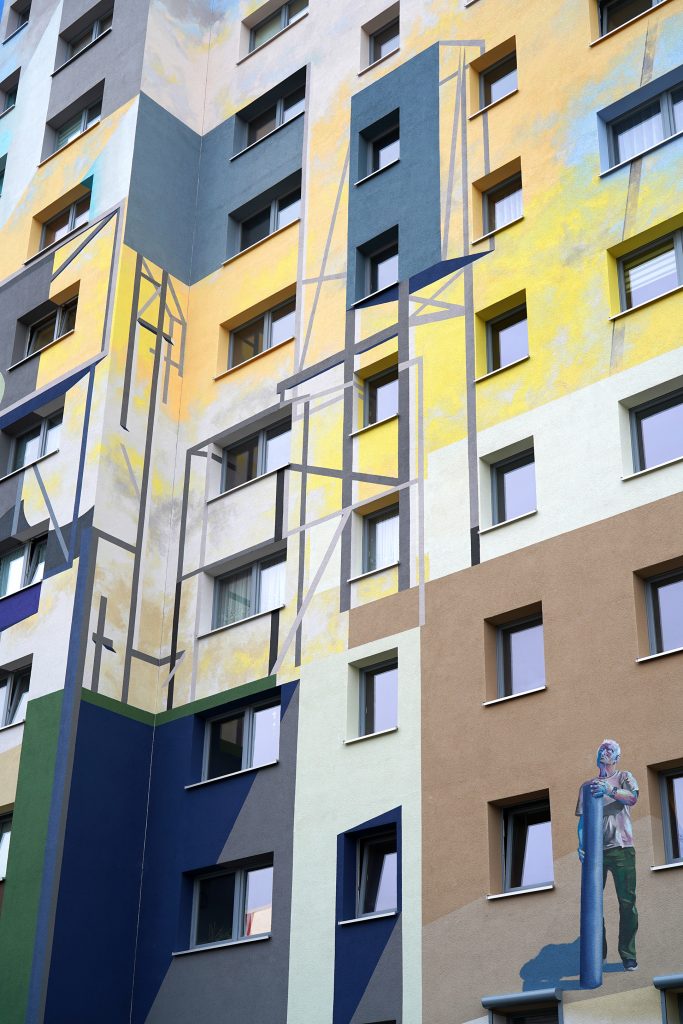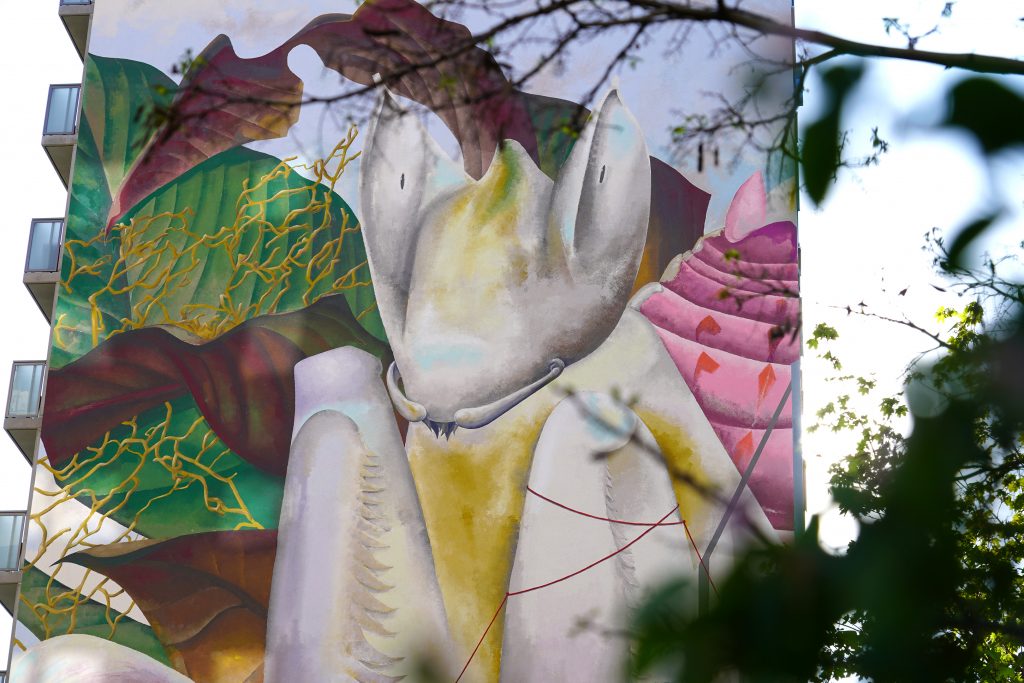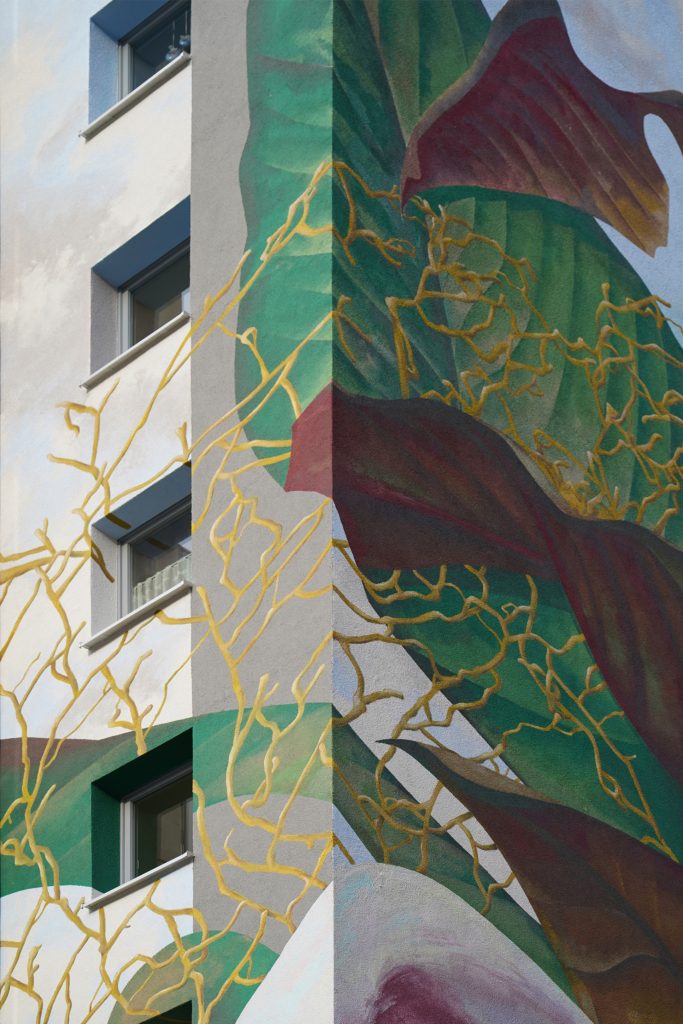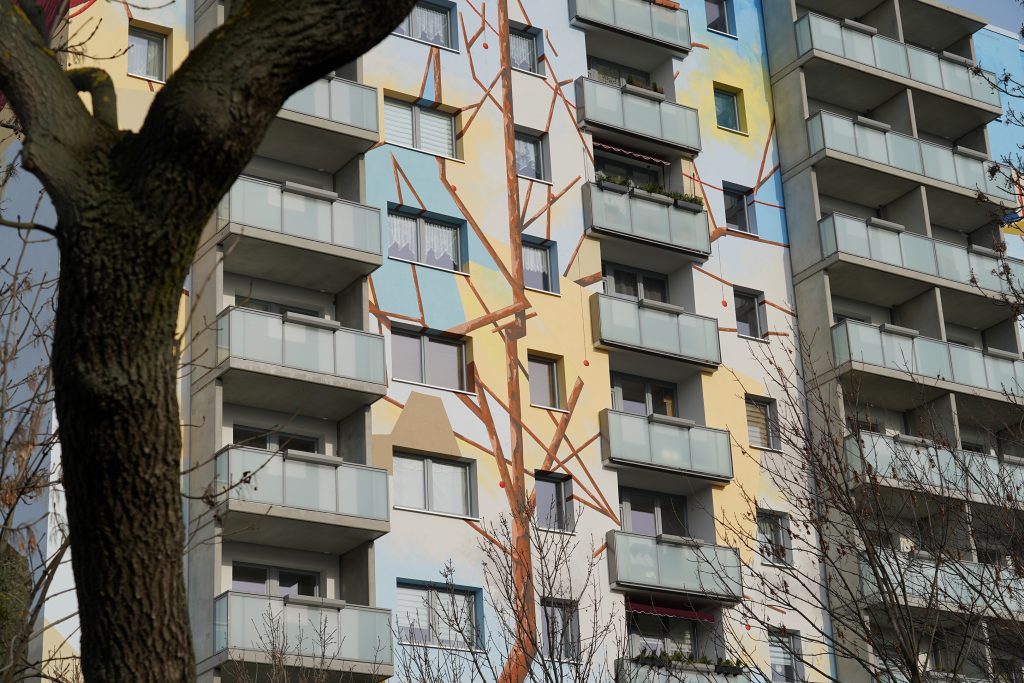Balanceakt I
Place: Franckesche Stiftungen, Halle (Saale), Germany
Date: 2018-2019
Material: Mineral facade paint
Partner: Philipp Eichhorn & Bzu
Assistance: Alexander Fredoe Dümke, Alexander Staiger, Frieder Bader, Hanna Müller-Kaempffer, Joav Scholz, Kyrill Hirner, Marten Ernst, Martin Krauth, Max Rademacher, Michael Schulze, Nancy Röschter, Philipp Hurst, Philipp Kienast, Robert Czolkoß, Sebastian Boo Borkert, Stefan RDY Retzlaff, Sone, Tillmann Ziola, Tim
For over two years i worked together with a large team on a mural project that demanded everything of us. 4 socialist blocks with 11 floors each were to be painted in my hometown Halle.
The mural ensemble “Balanceakt“ was painted in 2018 and 2019 as part of the renovation in Voßstraße – a neighborhood that highlights contrasts. In the immediate vicinity of the Francke Foundations education and science center, socialist prefabricated buildings meet historic half-timbered houses here, main traffic axes meet trampling paths, and extensive visual axes meet crooked alleyways. The history depicted on the walls is derived from the Voßstraße quarter itself and is creatively embodied by its residents. At two block parties, residents recreated various constellations of figures, which were photographed and integrated into the facade designs. The residents now recognize themselves in the images and identify with the artwork, the motifs and the unique design of their neighborhood.
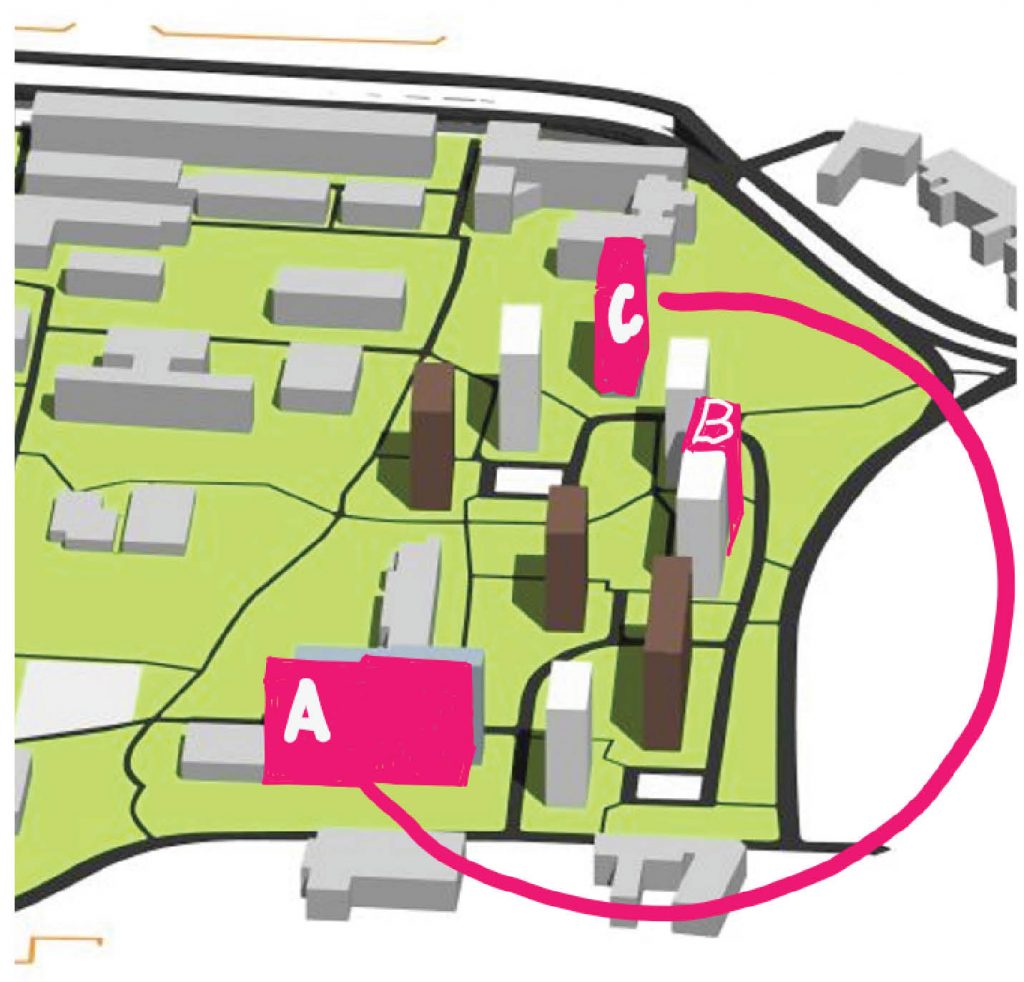
Before we started with designs, we took long walks through the site several times at different times of the day. Clear challenges quickly became apparent. How do you combine murals on buildings that are not right next to each other? How do you paint socialist architecture in a baroque site? How to do justice to the various visual axes of rushing by distant views and extreme close-up views of residents? What can a motive be to connect the 11th floor with the first floor? We needed a concept that created a balance of old and new, of far and near, of high and low: a balancing act – symbolized by a red thread that runs through the history and the site.
The Concept
We wanted to overcome the extreme contrasts through the concept of human and monumental scale. In the first floor areas, we painted figures as big as real humans. Most of the winding terrain in which the houses are located is exclusively visible for the residents. Ideally, they should identify with the painting and see motifs at eye level next to the house entrances. The upper floors are perceived from cars that pass the area in a bit of a distance. For them, large, monumental motifs were painted that are quickly grasped. The connection between the small-scale human perspective and the oversized motifs of the upper floors is depicted by a red thread, that olds it all together.
We organized two block parties with the building owners and social players. Between barbeque and guided tours through the area we presented our ideas and discussed them with the residents. We took their ideas home to develop our concept more detailed. For more worked out sketches, residents became part of the story. Situations from the designs were re-enacted and the photos of that became the basis for further designs. Our goal was for people to get to know us and the designs by being part of the process. The aspect that residents met us before we started to paint and actually see themselves in the mural led to many nice situations during the two years of painting. We got tea and coffee through the windows and very often shared our lunchtime with the kids of the neighborhood.
The Origin
The story unfolds from an oversized ball of wool, from which the proverbial red thread runs through all the murals along the facades. One time a cable or rope, another time a pulley or circuit, the thread is unwound at the beginning from a spool that unites all 42 colors used in the wall paintings. Against a morning sky, the narrative begins: solid structures form from stone and earth, organic materials take shape, plants, animals and humans grow.
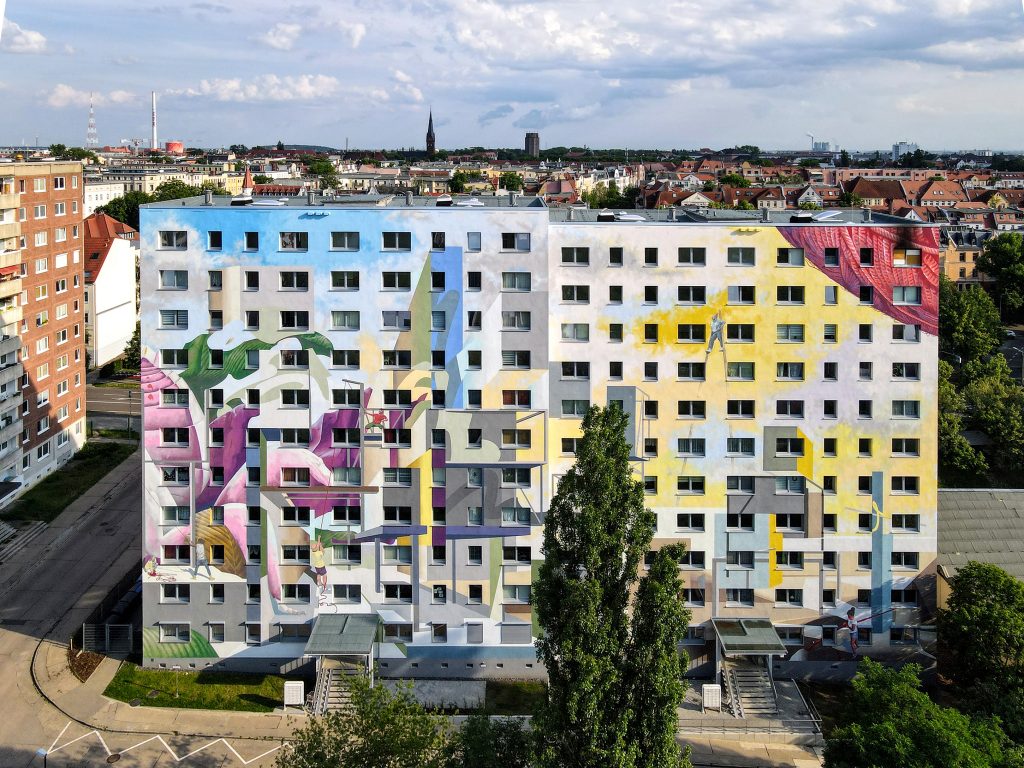
Man discovers, plays, explores and paints his own world. He also makes use of nature, wants to tame it, control it and vacillates between growth and exuberance.

The Playground
A special opportunity arose at the back of the double block. HWG (the building owner) was planning a playground. In consultation with the spatial planners, we were able to coordinate our motifs on the wall with the planned playground and create an interaction of wall and space.







